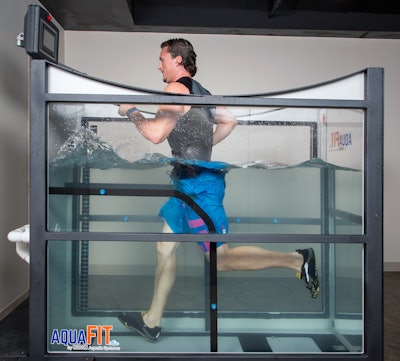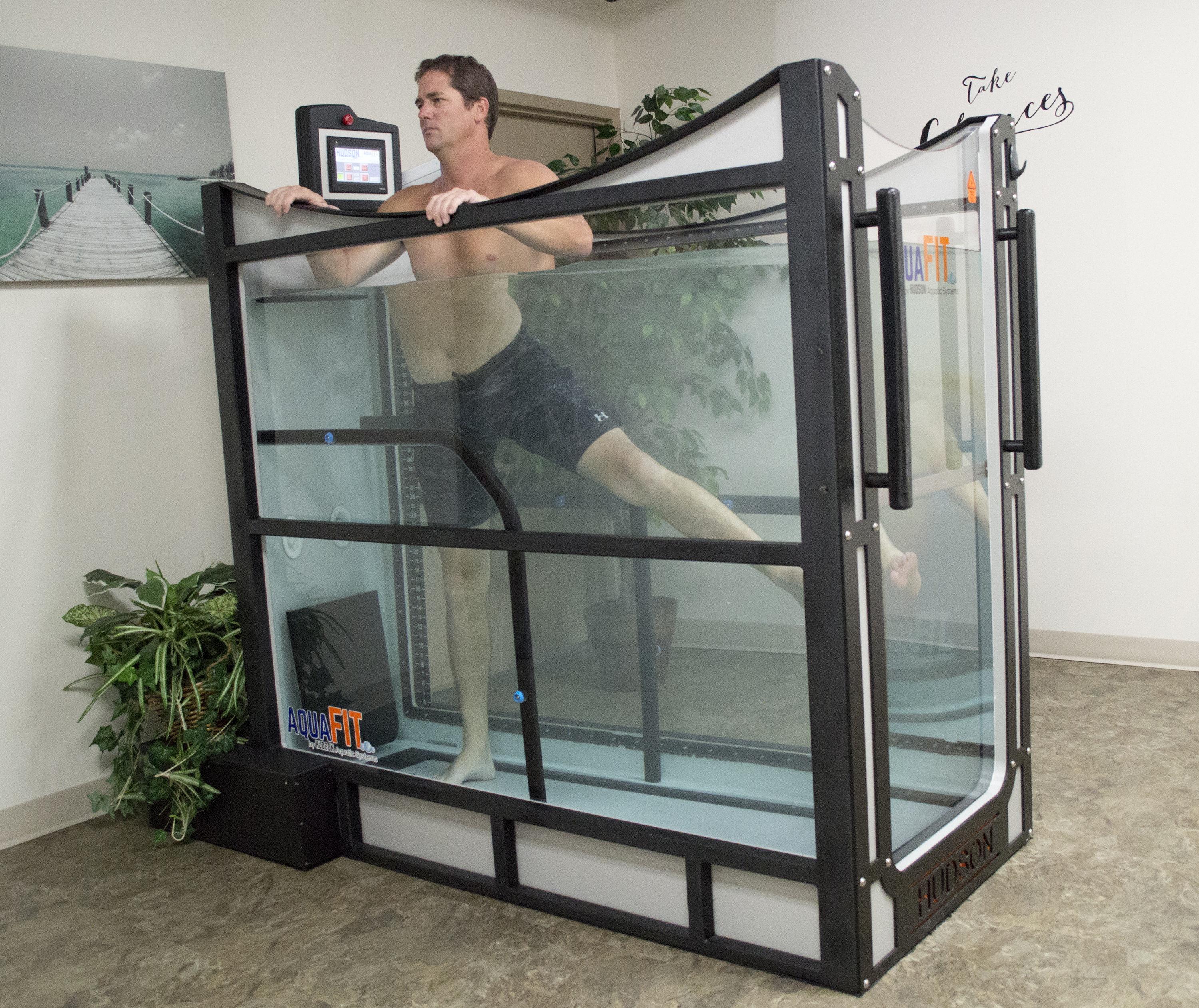
Injuries are inevitable. How athletic programs plan for the health and safety of their athletes’ injury recovery can determine the success of a team’s season.
ACL tears continue to be one of the most prevalent injuries in athletes, with rehabilitation protocols requiring athletes to be sidelined for extended periods of time, adding increased stress on programs to properly plan, fund and train for such situations. With 35 to 45 percent of athletes not returning to the sport after injury, and 30 percent of young athletes experiencing re-injury within two years, it’s clear that the functional recovery process of ACL reconstruction (ACLR) needs to be improved and more focus placed on rehabbing the injury while maintaining overall strength and cardiovascular fitness.
Water vs. land
Keeping athletes healthy and in the game all season is a huge challenge for coaches and trainers. Programs that offer athletes aquatic conditioning can improve overall strength, fitness and flexibility, which prevent injuries and re-injury in previously injured athletes.
Utilizing the natural properties of water, including buoyancy, allows athletes to work out harder, at higher intensity levels, more days in row, as compared to land-based workouts. Because of decreased weight bearing in water, general wear and tear on joints, risk for injury and muscle soreness are reduced.
With 360 degrees of resistance, working out in water forces athletes to work their muscles both concentrically and eccentrically. With concentric and eccentric muscle contractions occurring with all movements, the athlete is making progress with power and speed while building muscle mass and increasing strength. By keeping athletes properly conditioned, with focus on increasing strength and flexibility, risk of injury decreases.
Aquatic therapy using a pool and/or underwater treadmill system, such as the AquaFit underwater treadmill, provides benefits to injured athletes throughout all phases of recovery. By utilizing the properties of water in the functional recovery process, activities and exercises can be introduced earlier than on land, reducing recovery time and producing better results.

Aquatic benefits to ACLR recovery
Adding aquatic therapy to the ACLR recovery process provides six major benefits to athletes and trainers:
- Reduction of pain and edema, and restoration of joint range of motion
- Recovery of normal gait cycle
- Maintenance and/or development of cardiovascular fitness
- Movement pattern/coordination training
- Early introduction of plyometric training
- Between-session recovery and optimal load management
Correcting gait and compensation patterns
Re-establishing normal gait patterns and correcting any compensations from the use of crutches after surgery is a priority in the functional recovery process. The natural buoyancy of water allows athletes to focus on proper gait mechanics with less stress on joints and decreased risk for fall or re-injury. Utilizing the AquaFit underwater treadmill system allows trainers and therapists to adjust the water height to unweight the athlete and adjust the treadmill speed by .1 mph increments for easy, customized progression through treatment phases. Buoyancy allows for focus on neuromuscular re-education in a safe environment, allowing the athlete to focus on lumbar and pelvic control for balance and stability with exercise.
Hydrostatic pressure also plays a vital role in recovery. When the injured area is immersed and water pressure is higher than diastolic blood pressure, fluid is forced out of the joint resulting in decreased swelling and increased joint range of motion. Normal gait mechanics cannot occur without normal joint motion and reducing swelling is an important step toward recovering the normal gait cycle. Immersion in water also desensitizes the injured area, diminishing pain perception and increasing range of motion.
Safe and quicker re-entry
Creating and maintaining an athletic program with top-performing athletes requires planning and training that addresses injuries and treatment. Lengthy recovery protocols make returning athletes safely and quickly to the game difficult.
By utilizing aquatic therapy and the properties of water, functional sport-type tasks can be initiated sooner, with less pain and risk for re-injury. This allows for simultaneous strength and motor control training through all phases of rehab. With athletes reporting decreased pain and joint swelling after treatment sessions, the AquaFit can be used for supplementary exercise on rest/recovery days to continue progress toward treatment goals.
Rehab programs for injuries such as ACLR also make maintaining cardiovascular fitness a concern during the process of promptly and safely returning athletes to their sport. With the added resistance of the water, aquatic workouts are more challenging than those completed on land. Utilizing the AquaFit for deep-water running allows for cardiovascular exercise similar to running on land. Because deep-water running can be performed sooner than running on land, an athlete’s cardiovascular fitness can be maintained throughout treatment, reducing overall recovery time.
Learn about adding aquatic therapy to your athletic program with equipment customizable to each athlete and injury. Visit https://www.hudsonaquatic.com/athletic-business/ for more information.












